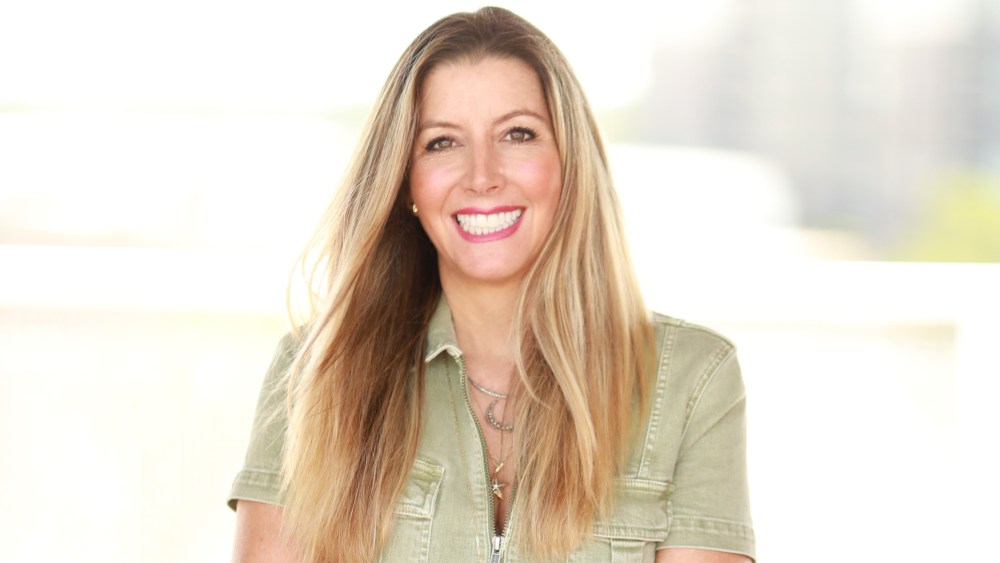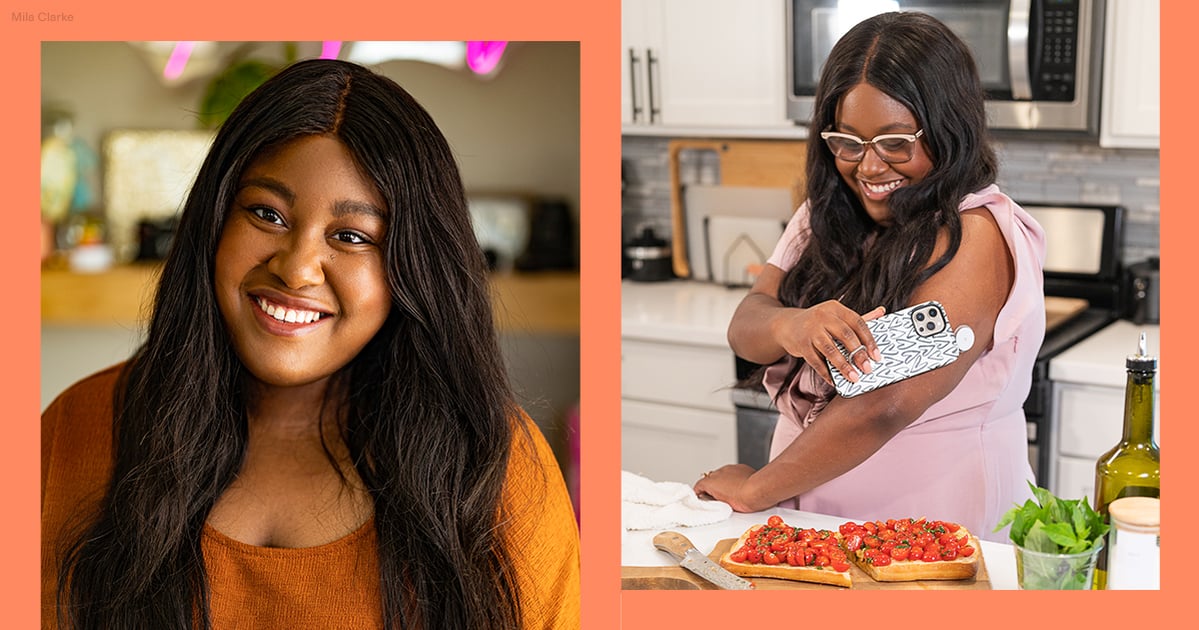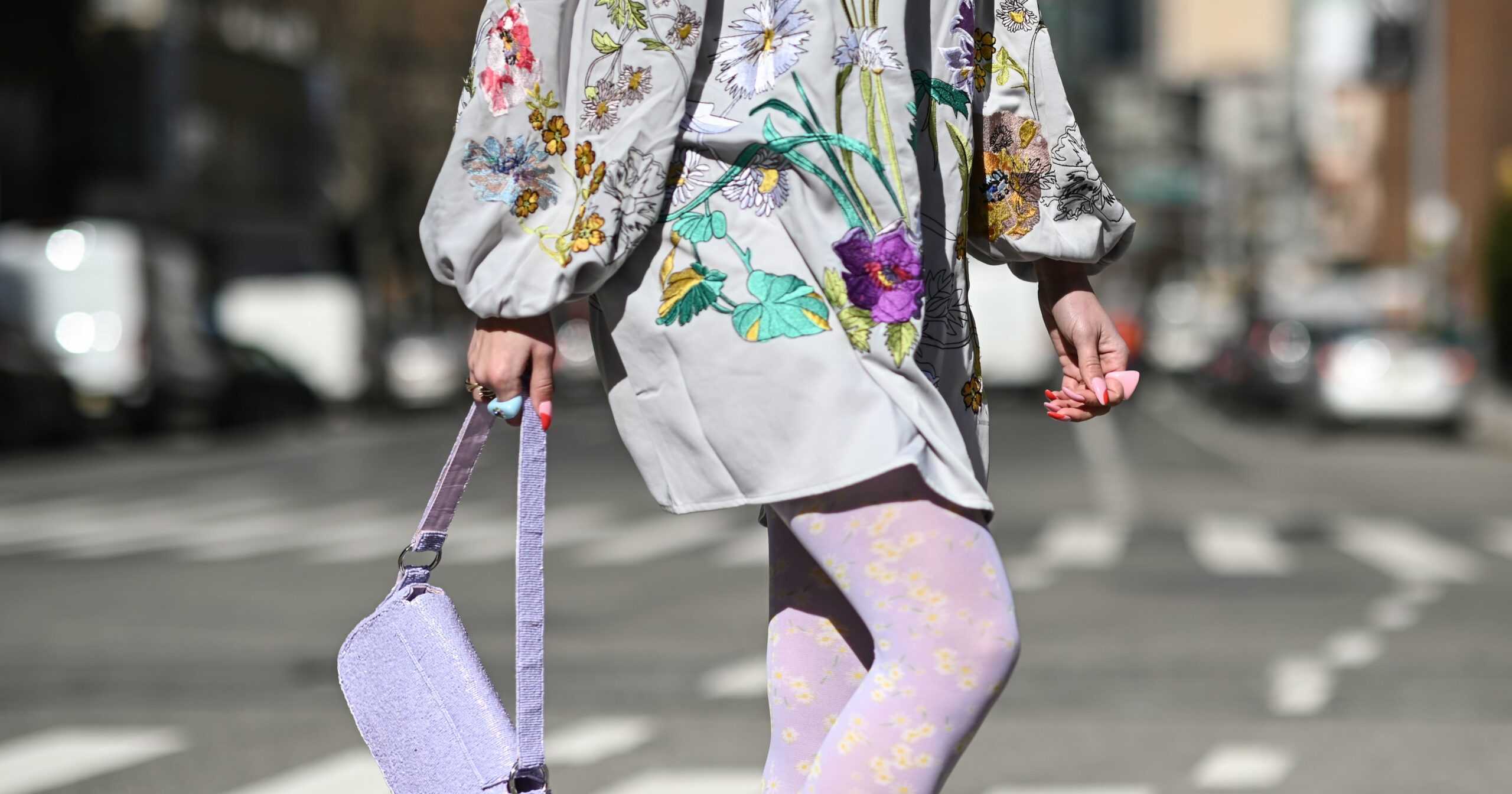Sara Blakely, the 54-year-old entrepreneur who founded Spanx in 2000 with $5,000, built the brand into a market leader valued at $1.2 billion when Blackstone acquired a majority stake in 2021.
Today she has shifted her attention to Sneex, which blends a traditional stiletto with the performance and comfort of a sneaker. But it’s easy to get her talking about her first baby, Spanx, which has turned 25 years old.
Spanx revolutionized the intimate apparel industry and created an entirely new category of shapewear. It began by inventing modern footless pantyhose that provided a smoother look under clothing. Before she invented Spanx, Blakely was selling fax machines door-to-door for seven years.
When asked what problems she was trying to solve with Spanx, Blakely said, “Well, the first problem I was trying to solve was an invisible undergarment that didn’t leave any visible lines, leg bands or bulges under your clothes. And really create the perfect canvas that was lightweight, flexible, breathable and comfortable.”
You May Also Like

She said she had the idea to create an undergarment out of hosiery material and that was very confusing to the people who had been making hosiery for 75 years “because hosiery was meant to be seen on the leg, and I showed up with the concept of, ‘I just want your material because it’s so lightweight and doesn’t add bulk under my clothes. It’s as close to second skin as you can get. And I’m going to create an undergarment out of this that nobody sees,’” she said.
According to Blakely, she worked with a combination of yarns. “I always joke and say our options weren’t that great. We had the traditional girdle, which was too thick and hot and left a big bulge on your thigh where it ended. We had traditional underwear that left a pantyline, and then out came the thong that put underwear exactly where we’ve been trying to get it out of,” she said.
The very first product was footless control top pantyhose. “And that was the ultimate perfect undergarment under white pants. Nothing stopped on the thigh. You could be wearing the sheerest white pants. You could be wearing all different fabrics — you could be wearing knit, linen, silk, satin and not see a leg band on the thigh. So the leg band stopped just below the knee and all the transition of the shaping part, moving into the sheer part left no mark under your clothes. It was able to get you the best butt, no marks, no panty lines,” she said.
Asked if there were doubters in the beginning, Blakely said, “There were a lot of doubters. Obviously anytime you do innovation, I mean to me, one of the biggest indications that you’re creating something innovative is you get a lot of pushback. You get people to tell you you’re crazy. You get resistance. So I always take those as compliments and I’m onto something. I got a lot of pushback mainly from the factories that didn’t understand the concept, or who didn’t really know what I was trying to accomplish.”

The other thing she was trying to accomplish was that “men had been making all of our undergarments, and I wanted a woman to make them. I wanted someone to make my undergarments who actually understood the problems and the concerns, and understood how we feel,” she said.
“I always say Spanx was the R&D [research and development] department for the whole industry. We kept inventing things that women didn’t know they needed and once we launched it, they couldn’t live without it,” she said.
Blakely said that Oprah actually chose the footless control top panty hose as her favorite thing at the time. “Then Spanx was the first to ever create a control top fishnet so women didn’t have to sit on the net and the grid. I had a lot of fishnets that slid down during the day in the middle of the thighs. We were the first to put a control top on that, which was a really big deal for women at the time. Then we created power pants, and we were the first company to ever create a shaper short with no leg band, but it stayed down on the thigh. And we did that through a lot of innovation, a lot of knit techniques and a lot of yarn choice, but that one really changed the game for women because you could wear the little shorts. Finally, they were flexible, they were breathable but they didn’t have a leg band,” Blakely said.
“Then we took the technology that we figured out how to keep the shaper short down on the leg, flipped it upside down and created trouser socks that stayed up on women without a leg band at the top that created a bulge or a line for comfort. We created a bra where except for the cups, was made out of hosiery, which had never been done before,” she said.

Blakely said Spanx created the first smoothing bra to ever hit the market. “And the reason why I wanted to do that? A lot of people had been focusing on innovation all around the cups. One day I was in the store and looking at all these women walking by, and it wasn’t flattering on the back. I went back to the team and said, ‘Let’s reinterpret the bra from the back.’ We really revolutionized the back-smoothing back.”
What made Spanx unique was that the brand was coming out with products that didn’t already exist. “We were filling needs for women. The other thing Spanx did that was unique at the time, we were so obsessed with results and comfort. We would iterate and iterate and do tons of prototypes until we got to the moment [that] we called ‘lightning in a bottle’ where you would get great results from the product, but you also couldn’t believe how comfortable it was. A lot of products in the industry maybe hadn’t taken that much time on how a woman feels in the garment. Spanx’s number one was how does she feel, is it working, and will it give her the results she was looking for?”
Blakely said that after she got her products in the top department stores, she spent two to three years standing there selling Spanx to customers.
“I went for two solid years, seven days a week. I would come home every now and then. I stood in the stores and I remember using Mapquest at the time and leasing a car and doing Priceline to find my hotels along the highway. Then going from store to store across America — Saks, Nordstrom, Bloomingdale’s and Dillard’s and literally selling it to the consumer for that store. And that’s where I got all my best ideas because I was standing where the customer was and she’d say ‘what about this?’ or, ‘can you make that?’ and it was a wonderful way for me to be hearing from the consumer directly,” she said.
Asked when she realized that her product had made it, she said, “Right away. It was hard for me to get the factories to make the product, so that was a really difficult part, but once I had the product made, it took off,” she said. For the first seven years, 100 percent of all the products were made in North Carolina. Then, as the company expanded into other areas, such as activewear, it started making products around the world.
Discussing what she’s most proud of in terms of building the business, Blakely said, “I’m really proud that I made millions of women feel better. I’m really proud that I ran the business using a lot of the divine femininity and leaning into vulnerability, intuition and empathy. Things that at the time when I started Spanx were almost viewed as a weakness in the business world, I leaned into them. And I really feel like that was one of the superpowers of Spanx, going up against billion-dollar companies with endless ad budgets, and I’m in my apartment with $5,000, but I’m very proud of the way that we ran the business and grew the business,” Blakely said.
In fact, she said she started the company with $5,000 and never had outside investors. “For the whole 21 years that I owned Spanx, it was a self-funded business,” she said.
Blakely said she’s pleased with the way the business has been run since she left the day-to-day management. “I feel like I’ve moved from the mother of Spanx to the grandmother of Spanx. I’m more like, ‘Call me if you need me.’”
Blakely pointed out that Spanx was started right before 9/11 and it went through the 2008 financial crisis, and it went through COVID-19. “And the company continued through all of that to thrive because we kept our eye on the consumer and just wanting to create product that was going to change her life and make a difference in her life. But I really do believe when you are so focused on our product and creating the very best product, it’s a moat that you create around your own business or brand, regardless of what’s happening around you,” she said.
As for how she feels about the fact that she started an entire category, she said, “I think it’s amazing and how much fun to be able to stand back and remember when I was in my apartment with one product, doubting myself. ‘Will anyone buy this? Will anyone even understand what this is, or think it’s cool’ and that moment of just being this 29-year-old girl sitting in my apartment holding the very first product that had been shipped to my apartment for selling, and standing back and going, ‘Wow, we defined a whole category.’”
One of the funny things that happened along the way was when she named the company, Spanx. “Now Spanx the word defines the category. It’s almost become the Kleenex of the category. But when I first named it Spanx, people thought I was prank calling them, and when I called them, they would hang up,” she said.
“Well it does make your butt look better. And the word Spanx made your mind wander a little bit and nobody ever forgot it. S-P-A-N-X is obviously what I named it, but it’s just funny to think that at the time that I created that name, it was very controversial. There were department stores throughout Middle America that wouldn’t sell Spanx because they thought the name was too risque,” she said.
Other memorable moments were when Spanx became one of “Oprah’s Favorite Things,” and when all the celebrities for the first time started talking about their undergarments on the red carpet. “Before Spanx, no one ever, especially on the carpet, volunteered, ‘by the way, underneath my gown I’m wearing X.’ No one had ever done that, and it created a phenomenon. I mean, Spanx didn’t spend any money to advertise for the first 16 years. We became a household name because that’s how good our products were. That’s how good it made women feel, and that’s how much women felt compelled to share the secret.”
Blakely recalled the first time it happened. “Gwyneth Paltrow was on the red carpet and she leaned in when they were interviewing her with the microphone and they said, “What are you wearing? And she said the gown, and then she goes, ‘I also have two pairs of Spanx on underneath.’ Since then you got Julia Roberts, Adele, Michelle Obama saying they have their Spanx on. And then it became a phenomenon where women would flash their Spanx. In fact, Tina Fey dropped her entire dress on ‘Letterman,’ and was standing there in nothing but Spanx.
“And everywhere I went, they were flashing me in airports and parties and hotels and on the red carpet,” Blakely said. “And it was because the name was fun, the product was great and the customer I believe could feel the love that we were putting into these products. For the first time, they were like, ‘Wow, these feel different than anything I’ve ever put on my body,’ and my favorite compliment that I’ve received over 25 years was, ‘Spanx changed my life.’
“All these important moments in women’s lives — they’re at weddings, graduations, promotions, performing on stage. I’ve had so many women say, ‘Spanx changed my life.’ Or the other compliment that I get that I love the most, ‘You made something I didn’t know I needed and now I can’t live without it.’
“You know, queens were wearing it and pop stars were wearing it, politicians were wearing it. You get girls that are wearing Spanx to prom and get women in their 20s, 30s, 40s and all the way up to their 80s wearing it, so it’s just been this collectively loved garment,” she said.
“It’s funny to think the word Spanx was so controversial and now it’s the word for the category. We became a Trivial Pursuit question, we’ve been a ‘Jeopardy’ question many times. I just started laughing. This is a word that I thought of sitting in my car in traffic in Atlanta,” Blakely said.
She recalled years ago when she landed Neiman Marcus for a big order and called the factory to say she needed more product. “They said, ‘that’s great but what are you going to do about the crotches?’ And I said, ‘What do you mean? They don’t come with crotches?’ They said, ‘yes, but we only have two crotch machines, and they’re being used by somebody else. You need to come up with your own crotches.’ And I ended up looking in the Yellow Pages under ‘crotch’ and it’s not there. And then another word for crotch was gusset and that helped my search. But in the last minute I found somebody that could provide my crotches in Norcross, Ga., not far from where I live, and he saved the day and overnighted crotches to the factory so I could fulfill the Neiman’s order,” she said.

To promote the line, Blakely would travel across the country and was interviewed by every DJ who loved laughing and talking about the word Spanx, who were mostly men. She did Richard Branson’s reality show, “Rebel Billionaire,” and “Shark Tank.” She was on QVC explaining what this product was.
“Not only was I creating a new brand that no one had ever heard of, but it was a new concept and I didn’t have a big ad budget to even explain the concept, so I ended up spending so much time explaining to women how to use Spanx, what it was, and how they could wear it because the number-one thing people would say is, ‘What do I do with it?’ QVC was such a great opportunity for me to explain what was behind the product.”
Blakely recalled she would be standing in Neiman’s, Saks and Bloomingdale’s for about seven or eight hours a day, and she would sell between 35 to 55 pairs in a day. “When I got on QVC, I remember selling 10,000 pairs in six minutes,” Blakely said.
Although she didn’t have a technical background, Blakely said she was able to create the product by working with the factories. “Every product I created was through how I felt in it. I would speak to the factory, and I would say, ‘It’s a little too tight here, and can we loosen it up here,’ and we’d keep collaborating. But I had never taken a business class, and I never worked in fashion or retail, and I created Spanx.
“I leaned on the factories. They were the technical people and I was the one who was incessantly asking why. ‘What if we try it like this?’ Because I didn’t have any technical experience, I was looking at it from a different angle. That was a lot of the secret sauce. Most of the magic of Spanx was it was made very differently than how the rest of the industry was making undergarments because the factories would always say, every time we made a suggestion, ‘It’s never been done that way.’ And we would get all excited and we’d go, ‘OK, that’s what we want to try,’” she said.
“It looks like a simple garment but there’s so much technology built inside of it and the technology was not what the rest of the industry was doing, so it wasn’t standard. We were really breaking the mold as we defined the category,” she said.
She said that some of the stalwarts in the industry started to change their product as a result of Spanx’s success.
“I always say I’d much rather be an innovator than an imitator. And when you’re disrupting a category, investing in new products comes with the territory. It’s to be expected that people will copy you.…The benefit of this was to the consumer because there was someone finally in the game that was demanding comfort, and so it raised the bar across the entire industry to have Spanx enter the space because then all the brands started really focusing on comfort. And I think before Spanx entered the space, that hadn’t been a real focus,” she said.
Today, Blakely serves on the board and is there to support the team whenever they need.
“The consumer has been loving the expansion of Spanx into other categories. When we were developing product, our goal was to be the favorite thing in her drawer. We want to be the favorite jean, we want to be the favorite active pant. We want to be the favorite bra. Women have lots of different options but we always aim to figure out how to be your favorite,” she said.


